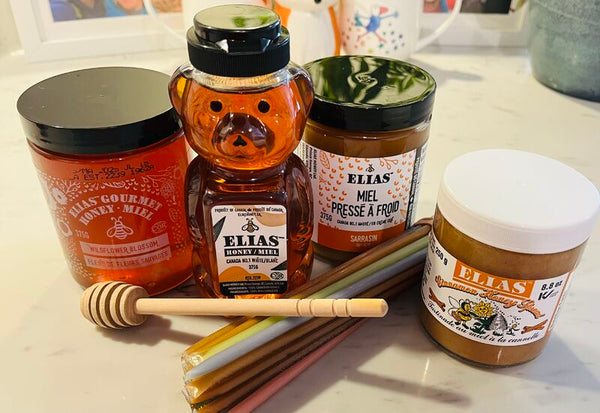The Sweet World of Honey
Honey, nature's golden nectar, has been cherished for millennia across cultures and continents. It's not just a sweetener but a testament to the diverse ecosystems shaping our planet. Join us as we explore the incredible world of honey varieties, each with its unique flavors and stories to tell.
Honey's Global Appeal
Honey transcends borders and cultures. It's a universal symbol of sweetness and nourishment. Across the globe, people have a deep connection with honey, whether as a culinary delight, a natural remedy, or a cultural symbol. It's this global appeal that makes honey a fascinating subject to explore.
Exploring Honey Types by Region
Honey's flavor profile is intimately linked to the region where bees collect nectar. Let's take a look at some of the remarkable honey varieties found in different parts of the world.
European Honey Varieties
From the delicate acacia honey of Hungary to the robust chestnut honey of Portugal, European honey varieties offer a range of taste experiences. Greek thyme honey, in particular, stands out for its aromatic and herbal notes.
Asian Honey Flavors
The Himalayan region produces the sought-after rhododendron honey, known for its spicy and slightly astringent taste. In Japan, prized varieties like sakura honey, derived from cherry blossoms, and yuzu honey, infused with the zest of yuzu fruit, add unique dimensions to Asian honey.
African Honey Profiles
With its rich floral diversity, Africa yields honey that reflects its unique ecosystems. Ethiopian honey, harvested from the highlands, showcases floral and citrusy notes. Meanwhile, the famous South African fynbos honey derives its flavor from the region's indigenous shrubs and herbs.
The Unique Tastes of Honey by Country
While exploring honey types by region provides a broad perspective, let's dive deeper into the unique tastes of honey by country.
Italian Honey Varieties
Chestnut honey from the Apennine Mountains is robust and dark, with earthy undertones. On the other hand, orange blossom honey from Sicily exudes a citrusy aroma and a light, fruity taste.
Chinese Honey Flavors
Tujia honey from the Hubei region is prized for its sweet and woody notes, while litchi honey captures the essence of the beloved tropical fruit.
Ethiopian Honey Profiles
Sidr honey, sourced from the nectar of Sidr trees, is highly sought after for its rich and complex flavor, often described as molasses-like.

Traditional vs. Exotic Honey Experiences.
Traditional honey, often associated with familiar varieties like clover or wildflower honey, provides a sense of comfort and nostalgia. It's the honey we grew up with, drizzled on warm toast or stirred into a soothing cup of tea.
On the other hand, exotic honey experiences open up new horizons of taste. They challenge our palates with unexpected flavors and aromas, inviting us to savor the intricacies of honey in unique ways.
A Global Honey Tasting Journey
Sample honey from around the world, from Brazil's tropical forests to France's lavender fields. Each jar tells a story of the region's flora and the bees' tireless work.
Honey Tasting Tips
When embarking on a honey-tasting adventure, there are a few tips to keep in mind:
- Use a neutral palate cleanser: Water and plain crackers are excellent palate cleansers between honey tastings.
- Opt for wooden or plastic spoons, as metal can alter the taste of honey.
- Begin with lighter, milder honey varieties and gradually move to darker, more robust flavors.
Preserving Honey's Cultural Significance
Honey in Cultural Traditions
Honey has played a role in cultural traditions and rituals for centuries. In Hindu weddings, honey symbolizes the sweet start of a married life. In Jewish tradition, honey is eaten during Rosh Hashanah to usher in a sweet New Year.
Honey in Global Cuisine
Honey's uses extend far beyond sweetening. It's a versatile ingredient in global cuisine, used in both sweet and savory dishes. From Moroccan tagines sweetened with honey to Korean sauces enriched with honey's depth, its culinary applications are diverse and remarkable.
Honey's Cultural Importance
Honey's cultural importance goes beyond taste. It's a symbol of nature's bounty, a testament to the collaboration between bees and flowers, and a reminder of the rich tapestry of global traditions.




